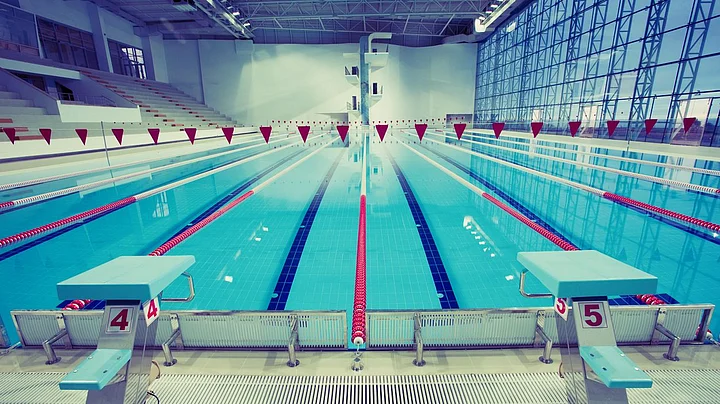Swimming body FINA (International Swimming Federation) has ruled against the participation of transgender athletes in women's swimming competitions and is mulling over an 'Open' category for trans women.
Trans women who have transitioned fully – socially, hormonally, and surgically – before the age of 12 are exempted from this rule and are eligible to compete in the women's category.
"The creation of an open category will mean that everybody has the opportunity to compete at an elite level. This has not been done before, so FINA will need to lead the way."Husain Al-Musallam, FINA President
In an official meeting, FINA asked its medical, legal, and athlete counsels to dwell on the subject. Two counsels from each section justified the top body's move, which was followed by an election comprising the member organisations.
Out of the 274 members, 196 voted in favour of the controversial policy.
What's the Reasoning?
Sports scientist Ross Tucker, in his podcast Real Science of Sport, argued that the hormones after puberty bring different structural changes to a biologically male and female's body. The males are at a greater advantage because of the testosterone levels, and transitioning into a woman doesn't cut out the effects of the hormone completely, he argued.
He further explained that according to at least 13 case studies, the effects of testosterone on physiological features like heart size, muscle strength, muscle mass, muscle performance, lung size, and body fat never get nullified entirely, even after the transition.
The difference between men and women in terms of strength, body power, and muscle mass is 30-40 percent. Year-long testosterone suppression only reduces 5-10 percent of it. Therefore, hormonal retention gives biological leverage, leading to a performance advantage, Tucker added.
"In a number of physiological systems that are relevant to performance – muscle mass, muscle strength, body performance, body fat, heart and lung size – testosterone creates things that are never fully undone. The difference between men and women in power, strength, and muscle mass can be 30-40%. Testosterone suppression for a year can take away 5-10%. The result is quite a large retained advantage – and if you've retained biological advantage, then you've retained performance advantage."Ross Tucker, Sports Scientist
The Case of Lia Thomas
Lia Thomas, who represented Penn State University for three years in the male category, underwent hormone replacement therapy in 2019, according to the guidelines set by NCAA and Ivy League.
Since the USA swimming rules demand three years of hormonal replacement therapy before reinduction into any competition, Thomas made a return in 2022 under the women's category. She competed in the 500-yard NCAA Swimming Championship and emerged as the winner, defeating Tokyo Olympics silver winner Emma Weyant.
In March, Lia Thomas told Sports Illustrated that trans athletes needed to be respected like other athletes.
"The very simple answer is that I'm not a man. I am a woman, so I belong to the women's team. Trans people deserve the same respect every other athlete gets."Lia Thomas
2016 Rio Olympian Reka Gyorgy, who contested for Hungary, complained about missing out on an NCAA berth because of Thomas. As per The Guardian, she was disappointed and was looking forward to being a part of the 2024 Olympics. However, Thomas was an NCAA swimmer even before she underwent hormonal therapy.
In the Extraordinary Congress called by FINA, the phrase "competitive fairness" was discussed. It was argued that Liza Thomas had a performance advantage because of her testosterone retention after undergoing hormonal changes. This was in contradiction to the NCAA rule of a three-year gap after hormonal therapy.
However, the age barrier of 12 by which transition must happen in order to compete in the women's category seemed far-fetched and arbitrary, according to many medical experts. The transition happens in three stages, ranging from social and hormonal to surgical.
"Which of these three do they mean? Should the patient have undergone surgery by that time, which is almost impossible."Dr. Alireza Hamidian Jahromi, Co-director, Gender Affirmation Surgery Center, Philadelphia
The Certification Conundrum
The latest FINA announcement stated every athlete would need to prove their sex assigned at birth through a chromosomal test conducted by the federation, before being allowed to take part in any of its competitions.
"All athletes must certify their chromosomal sex with their Member Federation in order to be eligible for FINA competitions. Member Federations must confirm their athletes' certifications of chromosomal sex when registering their athletes to compete in FINA competitions."FINA
What Does 'Open Category' Mean?
FINA had expressed its plan of introducing an 'open category' to include trans women athletes who are unable to make the cut in the women's category.
While scientifically it might sound logical, a dearth of enough top-class transgender athletes would mean individuals like Lia Thomas might not take part in any Olympics ever.
Gender activists, meanwhile, have lashed out at the recent FINA rulings for not being inclusive enough.
